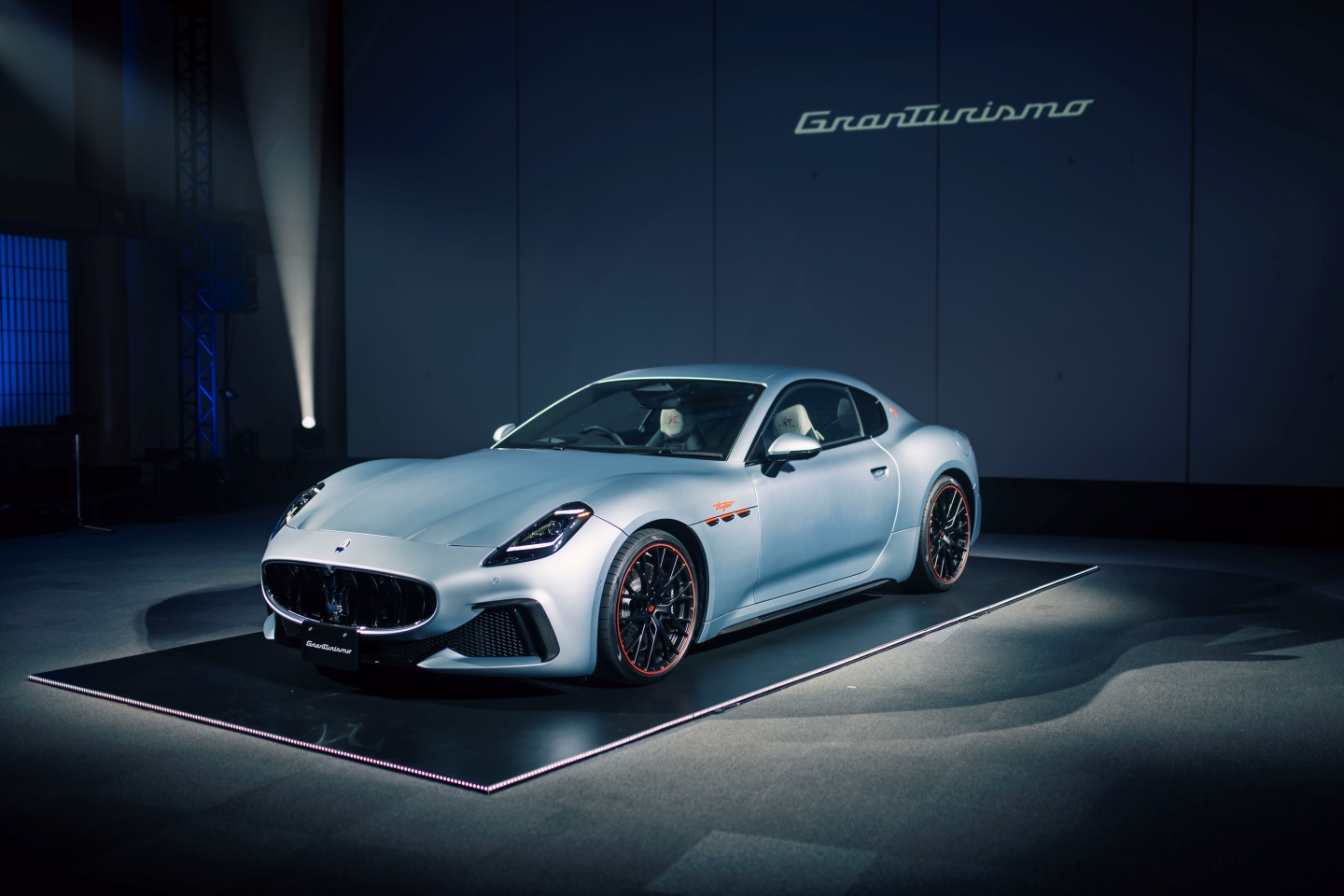
The GranTurismo retains a number of similarities from its predecessor, but they are more refined (Photo: Hiromitsu Yasui)
The original concept and idea of gran turismo, grand touring or GT cars essentially derived from the notion of being able to take a road car up to the track, race and then drive it home. It was a meeting of what were once two mutually exclusive worlds, a convergence resulting in luxurious and comfortable vehicles with superlative abilities — the sort of ride that could cut through valleys and take on anfractuous mountains effortlessly and in style.
Maserati debuted its first production road car, the A6 1500, at the Geneva Motor Show in 1947. Styled by Pininfarina, the elegant but powerful automobile (still regarded as one of the coachbuilder’s most beautiful creations) signalled a new chapter for the Italian marque as a maker of luxurious sports cars for the road.
The models that came after, from the 3500 GT to the Ghibli and Shamal, continued to embody this concept, but it was not until 2007 that the first generation Maserati GranTurismo was introduced. The four-seater, two-door coupé with a naturally aspirated eight-cylinder engine was an ode to the 1947 forerunner that started it all. It became one of the Trident’s most emblematic cars that not only epitomised the gran turismo spirit, but also the gran turismo lifestyle. That is until the second generation came along last year.
The Asian launch of the second gen GranTurismo was held in Tokyo, Japan, just two weeks ago. The Hongan-ji temple, located in the heart of the Tsukiji district, was intentionally selected as the event venue as its distinctive architecture embraces both the traditional and contemporary, which echoed the brand’s ethos, expressed Maserati Asia Pacific managing director Takayuki Kimura.
20231121_174033.jpg
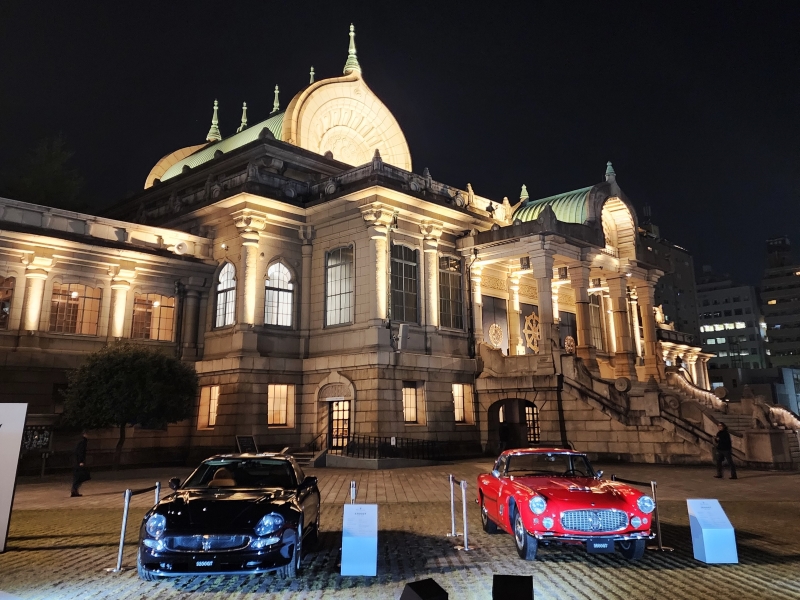
The silky fabric used for the unveiling did little to obscure the car’s expressive curves and sporty LED front and tail lights, but as it billowed and slipped to the ground, there stood the updated Maserati GranTurismo in the PrimaSerie 75th Anniversary Launch Edition, styled in Grigio Lamiera Matte with Corse Red details.
The GranTurismo retains a number of similarities from its predecessor, but they are more refined. In a video session, head of design Klaus Busse explains the need for visual longevity when it comes to Maserati’s icon. “Pure and clean shapes almost look easy to do, but believe me, the clean design is the most difficult. We avoid unnecessary air intakes and outlets. If there is a hole in the body of a Maserati, it is because we need the air to go in or out.”
The car is free from ostentation, but far from plain. Busse and his team managed to hit the sweet spot of exemplary proportions with the long bonnet and central body, intersected by four fenders. “Back in the day, race cars had exposed wheels. To make the cars road legal, we created these beautiful volumes that cover the wheels and also created space for the lights. We were inspired by the most impressive Italian artists and sculptors like Michelangelo.”
Upon closer inspection of the hood, one would notice the cut line has been extended to the side of the headlights. The cofango — a portmanteau of parafango and cofano, Italian words for “bonnet” and “fender” — takes up over three sq m of surface area, which helps in further engendering the pure design the team was after. “That is an incredible feat of technology. You won’t find any other cars having such a massive aluminium hood stamped in one piece,” he says.
At the back, the roof line dips to form a compact silhouette, yet the interior remains surprisingly spacious. “I can sit in the back and I’m two metres [tall],” quips Busse. “This is a car for four adults.” Inside, the modern cabin is equipped with a slew of innovative technologies. You have the Maserati Intelligent Assistant Multimedia system, ergonomically positioned displays, a “freeform” cluster (buttons between the central screens) that was first introduced in the Grecale SUV and a configurable digital clock.
dsc_2446.jpg
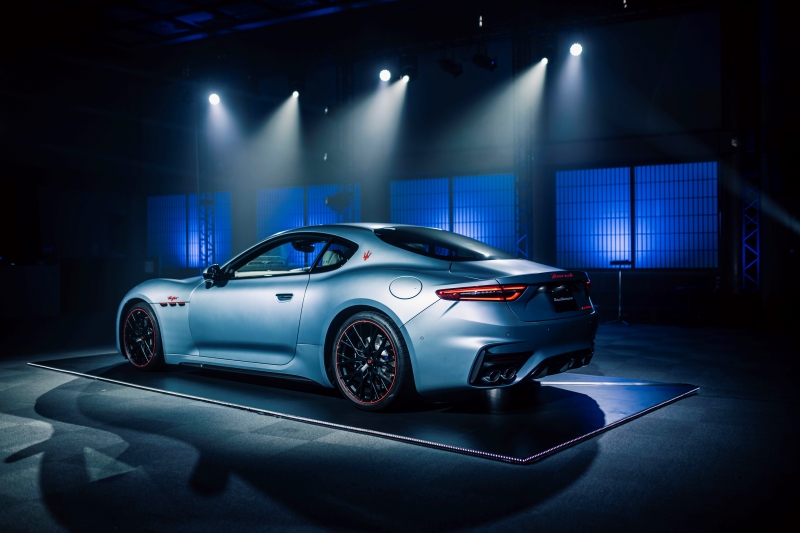
The sound system deserves special mention though. Designed by Italian audio artisans Sonus Faber, the epic audio technology embedded in the GranTurismo pays special attention to spatial and temporal alignment, creating a completely immersive and exceptional musical experience for those in the cabin. Maserati and Sonus Faber’s collaboration has won the coveted EISA Award for best in-car audio system three years in a row, first for the MC20, followed by the Grecale and now the GranTurismo.
On to the powertrain. “We are in a time, especially here in Europe, where the role of the car is being heavily debated,” Busse starts. “We want to give our customers a car they can enjoy. We want them to fall in love with the GranTurismo and then be able to choose whether they want it as an electric or combustion.” This is precisely why the GranTurismo is available in both packages.
One of the reasons the GranTurismo is able to remain close to the ground is because the previous V8 engine was swapped out for a V6 Nettuno — similar to the one that powers the MC20 — as it is compact enough to be positioned right behind the front axle. A V8 would be too big, potentially interrupting the front axle, which would create an undesirable weight imbalance and prevent all-wheel drive. “This was one of the key elements we wanted to achieve to truly make this an all-round drivable car,” he stresses.
The Maserati coupé is available in two petrol-powered AWD versions: the Modena, which is equipped with the 490 CV 3.0-litre V6 Nettuno Twin Turbo, and the Trofeo, the high-performance alternative based on the same engine, but souped up with a maximum power of 550 CV. It takes 3.9 seconds and 3.5 seconds respectively for the cars to go from zero to 100kph, and the top speeds are 302kph and 320kph.
But what makes the GranTurismo truly impressive is that the height remains exactly the same, even when going electric. Normally, EV batteries are fitted underneath the seat, which would naturally compromise the height with additional inches. But Maserati’s engineers were able to keep the GranTurismo low with a little rearrangement “They basically removed the powertrain from the centre of the transmission and used that very same space to package the battery so the batteries are in between the seats,” Busse explains. The ingenious “T-bone” layout also positions the battery mass closer to the roll axes to achieve perfect weight distribution and low centre of gravity.
dsc_2594.jpg
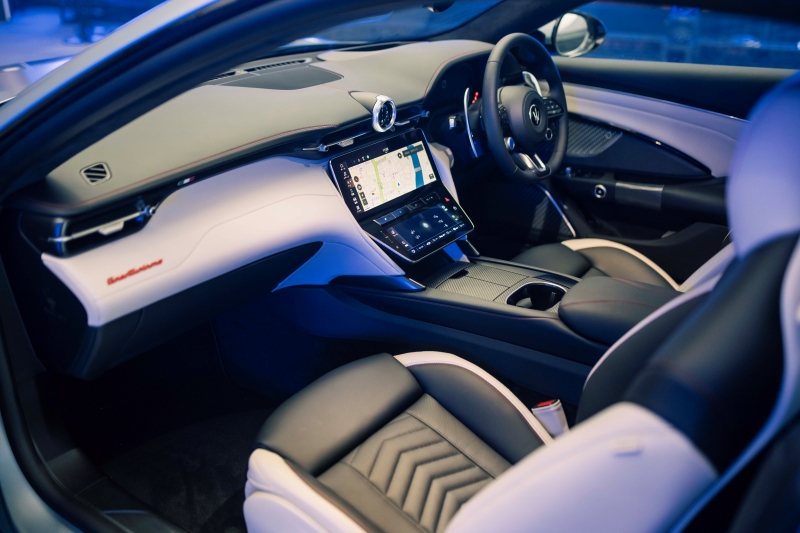
The GranTurismo Folgore is the first fully electric Maserati ever made. The system is based on 800V technology developed with technical solutions derived from Maserati’s participation in Formula E. “We are using the lessons learnt from Formula E to influence the software of the GranTurismo in the way we’re sending power to the wheels and to make this car such a unique, enjoyable track tool.” Its superb performance is also made possible by three 300kW electric motors — one in the front and two in the rear — that send 1,350 Nm of torque across all four wheels. It provides a WLTP range of 450km on a full charge, perfect for your grand touring jaunts, and can charge up to 100km in just five minutes with a DC fast charger (270kW). It is lightning quick, flashing from zero to 100kph in just 2.7 seconds and reaches a top speed of 325kph.
Taking a step back to admire the other fine touches of the car, from the perforated leather to the sinuous body work, one cannot help but think how a German is able to bring about a design that is so irrefutably Italian. Busse has this to say: “I’m not Italian as you have probably figured out. Many designers in my team are not Italian, but that’s okay. There are no Italian coffee beans in a beautiful cup of espresso. We come from around the world but we respect the way cars are designed.”
Growing up in rural Northern Germany, Busse was only able to get a good look at cars on TV. It did not matter if the show was good, as long as there were cars. “And then what happened was, I met a graphic designer. At that moment, I didn’t really know what design meant, other than the sound of the word seeming like the key and promise to see the world.”
He began his career at Mercedes-Benz, learning the craft of design for 10 years. That would lead him to the US, where he spent another decade at Chrysler, transforming the interiors of Chrysler, Jeep, Dodge and Ram to an award-winning line-up. He was personally called to Italy by the late Sergio Marchionne, best known for reviving Fiat and Chrysler at the brink of their collapse, to oversee the design of Alfa Romeo, Fiat, Lancia and subsequently Maserati.
“Mr Marchionne and I had a special relationship,” Busse shares. “He personally requested me to come to Italy, and that of course is an incredible sign of trust and responsibility — a responsibility that I made my goal to live up to not only when he was alive, but even now. He was very interested in the design of Maserati. We had wonderful debates. I learnt so much from him, and it will always be with me.”
small-21494-maseratigranturismocelebrationeventklausbussemaseratiheadofdesignwithgranturismoone-offprisma.jpg
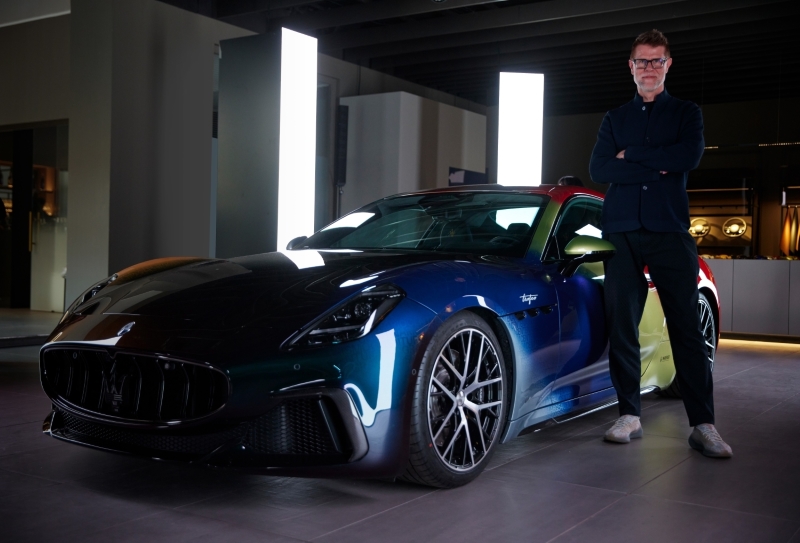
These lessons are what he hopes to apply when managing his own team. “I had the privilege of working with some of the greatest leaders of the industry. I can compare management styles and pick and choose from the best leaders and mimic that.” His stints around the world have also helped him develop an international perspective. “I am able to infuse a new sense of pride into our products. We represent Italy with Maserati and being able to present this outside perspective to the team is one of the benefits of my career.”
Coming back to design, Busse admits that he draws inspiration from multiple sources, from culture and fashion to technology and music. “The world is moving. There was a point where you had to attend a meeting in a suit, cravat and dress shoes. Now, you go to the same meeting in sneakers and with a backpack. We cannot stay in the past.”
This is one of the reasons, if given the choice of which GranTurismo to pick, he would choose the electric. It gives him the option to decelerate his life. “I go to the forest to do this almost hedonistic and emotional drive and sometimes, I would like to switch off the sound because it’s almost too much and doesn’t go away. The second point is the performance. When I drove the electric GranTurismo for the first time, I couldn’t believe it. It’s another level of ecstasy, adrenaline and awe.
“I studied with the engineers and learnt the package and software and how they were able to move the power where it wants to be on every single wheel. We know that electric cars can go very fast. What is unique about ours is they also go incredibly fast around the corner. The experience is insane.”
But this does not need to be a political debate, Busse points out. “We offer both. Isn’t that wonderful? I believe in electric, but if a customer is not ready, no problem. Go with combustion. That’s the beautiful thing about Maserati. We are really proud of both products and both will truly excite you.”
This article first appeared on Dec 4, 2023 in The Edge Malaysia.


